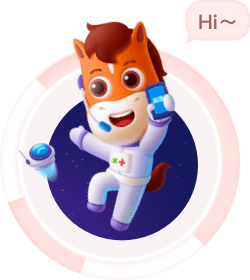高中 | 细节题 题目答案及解析
稿件来源:高途
高中 | 细节题题目答案及解析如下,仅供参考!
语言知识运用
篇章阅读
阅读理解的备考点
细节题
Once upon a time, researchers dreamed of building a robot storyteller. It would not only entertain (娱乐) young children, but also help them learn well. This dream has come true. The robot is called Tega. It is cute and appears to be useful in increasing young children’s language skills. Developed by a team at the Massachusetts Institute of Technology (MIT), Tega sounds like a child, makes its body and face full of life while storytelling and explains the tales on a screen with pictures.
In an eight-week experiment, Tega read picture books to 67 children aged from 4 to 6 in weekly meetings lasting an hour. During the meetings, Tega asked questions to have knowledge of the listeners’ language skills, tested them on a word’s meaning or asked them to describe a character. For example, Tega asked, “What do you think will happen to the boy?” Tega also recorded the facial expressions and body positions of the children to see how interested they were. For example, keeping the body forward was considered a good sign. After the book was finished, the children retold the story to Tega in their own words.
One group of kids played with a personalized version (版本) of the robot, which improved each time it interacted with the kids, learning about their language skills from the conversations they had. For this group, Tega chose which book to read based on what it thought would be most suitable for the children’s language level. Every second time, Tega would replace (替换) several words in the story for these children with more difficult words with similar meanings, such as “clamour” in place of “noise”.
A second group interacted with a non-personalized Tega that remembered the children each week, but chose stories to read at random (随机的) from its library of 81 picture books. For this group, the story difficulty increased every two weeks. A third group of kids didn’t interact with Tega at all.
Several weeks after the last meeting, the team found that all the children who played with Tega had increased their vocabularies (词汇), but the personalized group learned the most words. Their error rate on a vocabulary test dropped by 23 percent, almost double that of the non-personalized group. The stories that the children told back to the personalized robot were also longer and more wonderful, says team member Hae Won Park.
What do we know about Tega?
It has a voice of an adult.
","It is connected to the Internet.
","It can tell stories in a lively way.
","It is mainly designed to entertain kids.
"]细节理解题。根据第一段中 “Once upon a time, researchers dreamed of building a robot storyteller. It would not only entertain (娱乐) young children, but also help them learn well. This dream has come true. The robot is called Tega. (很久以前,研究人员梦想制造一个讲故事的机器人。它不仅可以娱乐小孩子,还可以帮助他们学好。这个梦想实现了。这个机器人叫Tega。)” 可知,Tega能生动地讲故事。故选C。
Why did Tega ask questions during the meetings?
To keep the kids interested.
","To help kids better understand a story.
","To know about the kids’ language skills.
","To encourage the kids to think independently.
"]细节理解题。根据第二段中 “During the meetings, Tega asked questions to have knowledge of the listeners’ language skills, tested them on a word’s meaning or asked them to describe a character. (在集会期间,Tega会问一些问题来了解听众的语言技能,测试他们对一个单词的意思,或者让他们描述一个角色。)” 可知,Tega在集会期间问问题是为了了解孩子们的语言能力。故选C。
What do the results of the experiment show?
Children enjoy telling back stories to Tega.
","Young kids really love interacting with others.
","The robot needs to be improved to work better.
","The personalized version of the robot helps kids most.
"]细节理解题。根据最后一段 “Several weeks after the last meeting, the team found that all the children who played with Tega had increased their vocabularies (词汇), but the personalized group learned the most words. Their error rate on a vocabulary test dropped by 23 percent, almost double that of the non-personalized group. The stories that the children told back to the personalized robot were also longer and more wonderful, says team member Hae Won Park. (在最后一次集会几周后,研究小组发现,所有和Tega一起玩的孩子的词汇量都增加了,但个性化小组学到了最多的单词。他们在词汇测试中的错误率下降了23%,几乎是非个性化组的两倍。小组成员Hae Won Park说,孩子们向个性化机器人讲述的故事也更长、更精彩。)” 可知,实验结果表明个性化版本的机器人对孩子们帮助最大。故选D。
What is the text mainly about?
A new invention for kids.
","A personalized teaching method.
","A new way to increase kids’ vocabularies.
","A study carried out by researchers recently.
"]主旨大意题。根据第一段中 “Once upon a time, researchers dreamed of building a robot storyteller. It would not only entertain (娱乐) young children, but also help them learn well. This dream has come true. The robot is called Tega. (很久以前,研究人员梦想制造一个讲故事的机器人。它不仅可以使小孩子高兴,还可以帮助他们学习地好。这个梦想实现了。这个机器人叫Tega。)” 可知,文章主要介绍了一项针对孩子们的新发明——讲故事的机器人Tega。故选A。
高中 | 细节题题目答案及解析(完整版)
